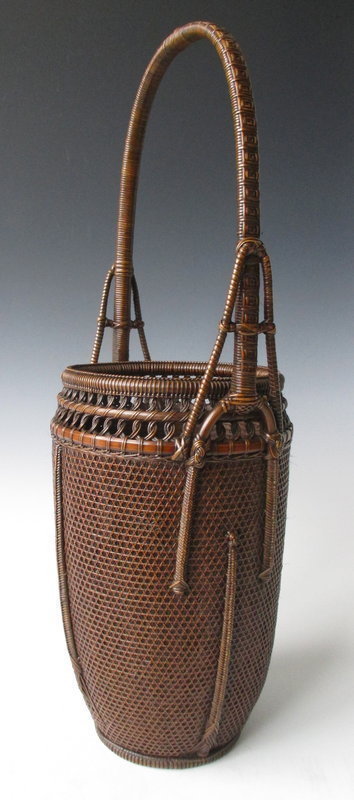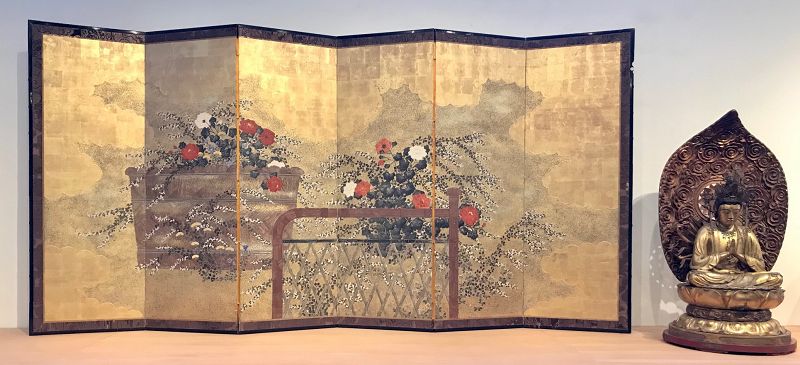The cylindrical ovoid flower basket with overall honey combed field cushioned with horse hair. Laths composed of interlaced triangles such that each point two lath cross has four neighboring points, forming the pattern of a tri-hexagonal weave. The weaved process gives the kagome a tessellated symmetry. The mouth neck is open weave that undulate and twist onto bamboo arrow shaft that is formed and finished tightly with an insect stitching. The generous loop handle is made with bamboo arrow for strength and is decorated with the turtle scoot and knot pattern. The antennae-like support structures of the handle, is also woven in the insect stitch. Chiku'unsai uses the karamomo style of formal symmetrical structures and tightly plaited weave. This was a manifestation of their age, old love affaire with obsession of Chinese culture. Chiku'unsai was fond of incorporating found objects such as horse air, bamboo arrow shafts onto his basket. As well as his innovative insect stitches, which are all symbolic for his love of nature. Bamboo baskets for the traditional arranging, Art of Ikebana, were particularly popular in Japan from the Late Meiji, Taisho, and Showa period from 1900's - 1950's.
Matched with its original tomobako (Wooden box, signed).
Early Taisho Period
Size: 23 1/2" high x 9" wide (at handles)
Japanese Ikebana Basket Signed Chiku'unsai
https://zentnercollection.com/product/japanese-ikebana-basket-signed-chikuunsai/


